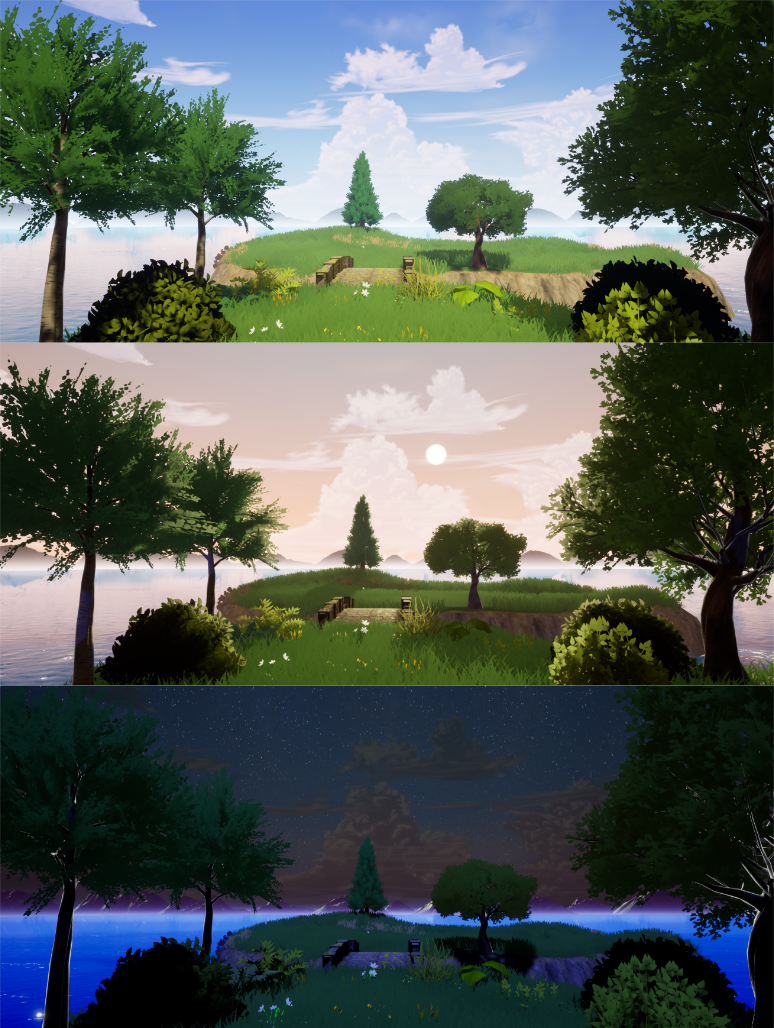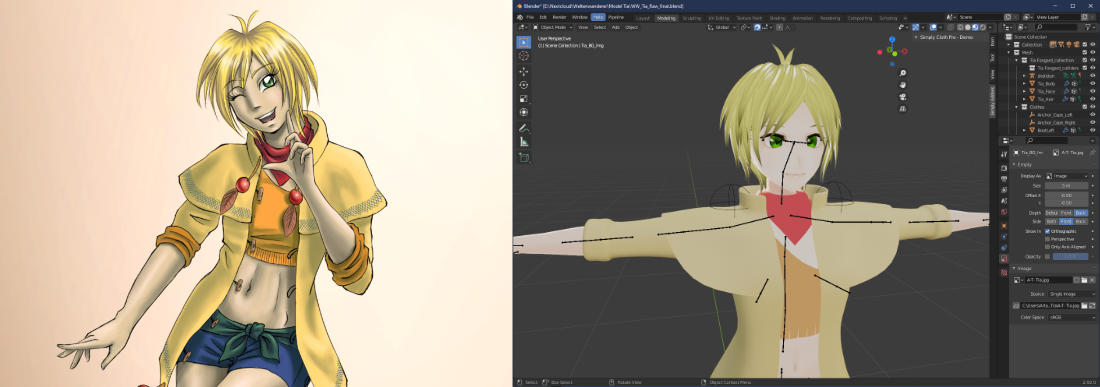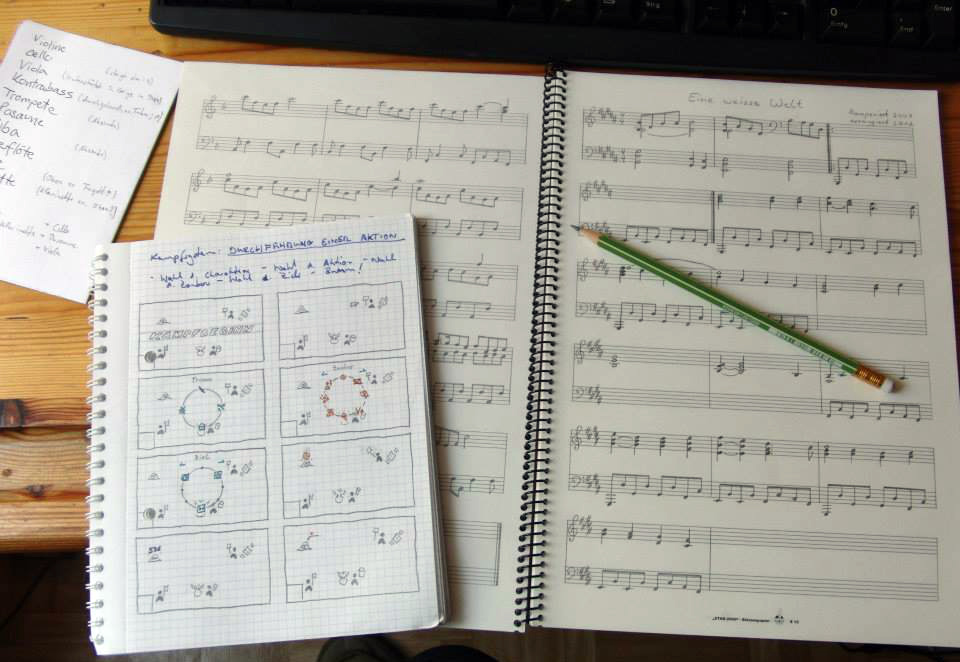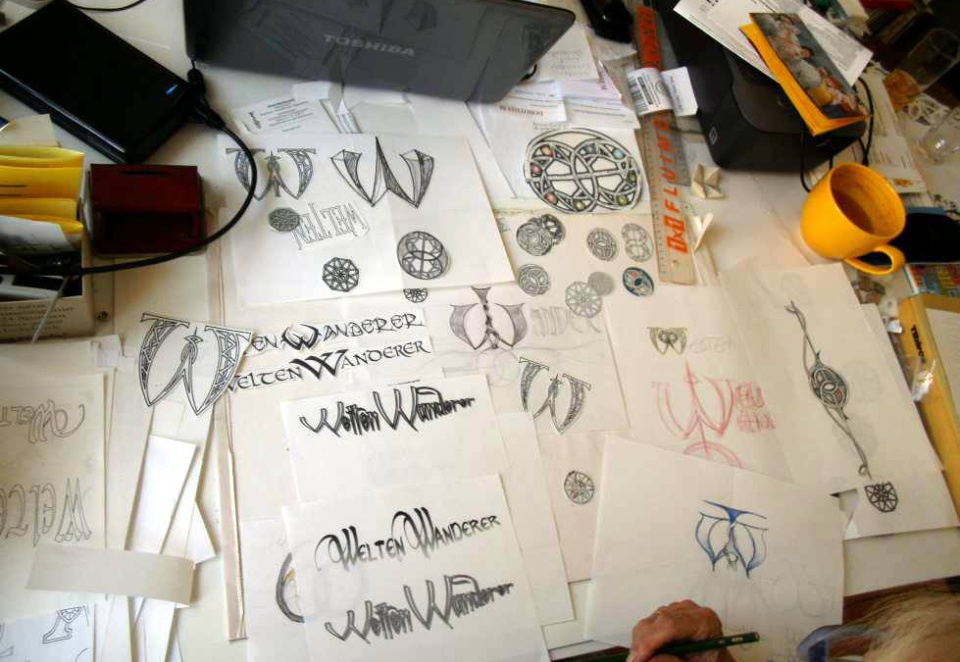When?
Since 08.2017 (ongoing)
What?
Project lead, game design, UI design, soundtrack
With?
Team of 8
The Project
For me, Die Weltenwanderer-Saga is a matter of the heart. I fell in love with Japanese role-playing games in the nineties, dreaming of my own fantasy epic like so many other fans when the RPG Maker tool became a thing in the early 2000s.
However, over the years, I could not help but notice that several points of criticism surfaced quite regularly when discussing different games from the genre. These ranged from overly complicated menu navigation, which had scarcely improved during the last 15 years, to implausible character dialogues and actions, to sometimes shallow or childish plotlines (saving the world from the evil demons by the power of friendship over and over again).
I assumed that these points of criticism probably had several explanations. On the one hand, there is a difference between Japanese culture and values, the birthplace of most of the games, and us western gamers, which might explain characters acting not like we would expect them to, or plotlines which are not within the range of our understanding of a typical storyline in western culture. On the other hand, tight development deadlines and budget cuts are common in big productions, and this can sometimes lead to an experience which feels unpolished in certain aspects of the game.
Out of these premises, the vision was born to develop a large-scale indie J-RPG which addresses the mentioned issues and delivers a more mature role playing experience. However, with such ambitioned goals, it was not until I gathered some other talented RPG enthusiasts around me that I could actually start working on the game. This is why I am very happy to have a couple of greatly talented teammates, from 2D and 3D artist to C++ developer, who work with me on Weltenwanderer.

Goals and Challenges
The two primary goals of the project can thus be derived as follows:
- The Story: The game should create a mature J-RPG fairytale in a rough world, peppered with social commentary, where not every problem is solvable by believing in friendship alone.
- The Gameplay: The game should deliver a familiar gameplay experience which appeals to fans of the genre, while also introducing fresh elements and thereby eliminating common pain-points from other J-RPGs.
Not exactly deriving from the above mentioned goals, but more from the dimension of the project and the fact that the whole team works on it in it's free time, several challenges arise that we have to face. The most prominent of them are:
- Working hours: All team members who work on Weltenwanderer do so voluntarily while having a life of their own - how can we find mutual time slots and get interconnected tasks done?
- Small budget: We don't have the big budget of a renowned game studio - how can we afford the development?
- Amount of work: Creating content, code, music and everything that's needed for a 3D game is a huge task - how can we effectively lessen the amount of work for everyone?
Solving these challenges has to get highest priority, as leaving one of the points unattended can potentially doom the whole project to failure.

Mode of Operation
Because our team members are scattered across southern Germany and each member has a different daily schedule, I developed a mode of operation which is inspired by agile Scrum workflow, although it is scaled down and altered to suit our needs.
The daily standups, or "dailies", have become "weeklies", a timeslot where everyone meets up in Discord to exchange progress on and difficulties with their tasks. This is also the time to go over currently assigned tasks, which are kept and updated in Trello. Our Trello board is used in a kanban style manner.
During the week, we either work on our tasks alone or, if the need arises, team members gather for additional meetings in Discord. Sprints usually last for two weeks, although we work without the hard constraint to deliver a shippable product at the end of each sprint. This constraint is usually non-debatable when working with Scrum, but has proven as not feasible in this context.
Every two to three months, we meet up for a live development jam, usually from Friday to Sunday evening. This helps with team bonding as well as creating and maintaining a team spirit, while it also makes it easier to implement particularly complicated features like the shop system and the battle system. Staying true to the idea behind a game jam, we limit the development to one specific idea or feature - the goal is to have it in a playable state by the end of the weekend.

Solutions
While the mode of operation partly solves the working hours issue, the other challenges need to be addressed as well. As the small budget issue and the amount of work are seemingly contradicting to a certain degree, other workarounds needed to be developed.
As an example, the visual style of the game was influenced by our way to tackle these problems: we opted for a hand-painted, cell-shading style not only because it is beautiful, but also because it is substantially quicker and easier to achieve for our artists than a realistic look. This allows us to create more content with less budget, while not having to compromise too much on visual quality. Additional actions include expanding our asset catalog with content from the Unreal Marketplace and regularly recruiting new talented people to join our team.
For the Gameplay of Weltenwanderer, on the other hand, we don't want to compromise on entertainment value and fun. We used Design Thinking to develop the concepts of the battle system. Several games from the J-RPG genre were analyzed for their individual characteristics, most notably the games of the Final Fantasy series (parts 7, 12 and 13), Tales of Zestiria, Secret of Mana, Ni no Kuni, Chrono Trigger, Xenoblade and other classics. The results were then used in a creative workshop to develop the final concept of the battle mechanics.
The first drafts for important gameplay elements, like the afore mentioned battle system, the puzzle gameplay and the dialog system, are usually brainstormed within the team using the above mentioned method. The fine-tuning and implementation is then carried out by two persons, including me and our C++ developer. Afterwards, playtesting is again done inside and outside the team. This process is carried out iteratively.


First picture: A storyboard for the battle flow and a piano score for the icy continent of our world. Second picture: Working on the logo, old-school on real paper.

Future
Die Weltenwanderer-Saga is still in an early stage and has a long way to go. At the moment, we are working on completing the first demo, which will consist of:
- Two playable areas
- Three playable characters
- All relevant gameplay systems (battle, dialog, puzzle system etc.)
As soon as the demo is finished, there will be several possibilities for us to go on, which will be discussed in the near future. One option is to start a Kickstarter campaign to raise funds for the further development. Another option is to participate in gaming exibitions like the GamesCom to attract futher attention and possibly more talents to the project.
More screenshots and gameplay videos will be added in the future - for details on the game content, please visit the project website (currently under construction).
